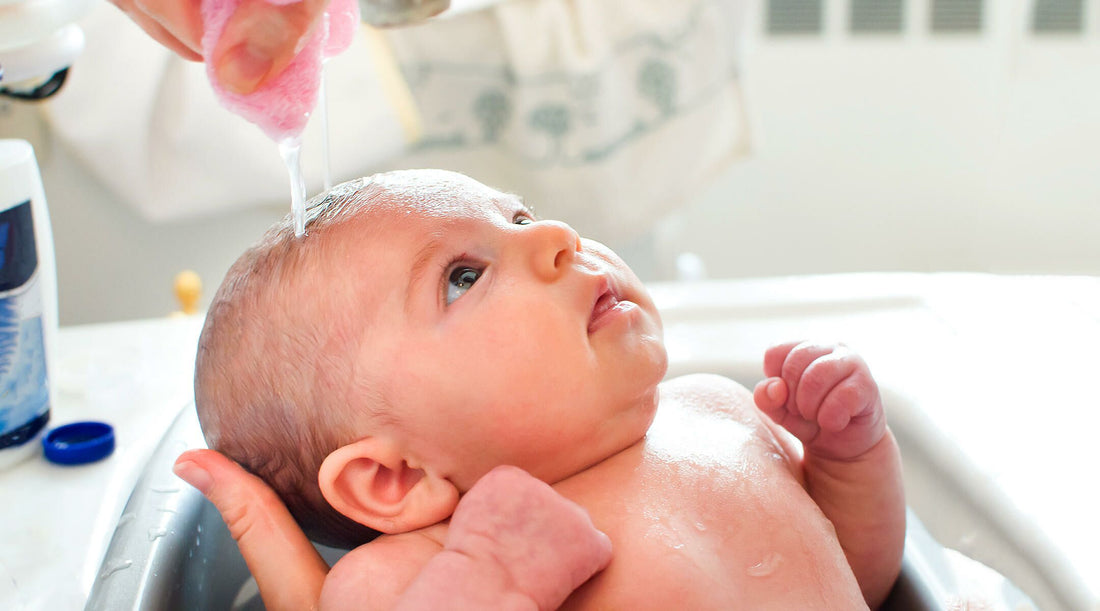One of the many firsts you’ll have as parents is your baby’s first bath. It’s one of the few things that require no help from the baby and it’s just the simplest thing! Yet, most parents are apprehensive to do this since they don’t want to break their children like what happens when dishes get washed.
When do you bathe them?
Before, hospitals usually give your babies their first bath. Nowadays, they refrain the practice of giving baths. It has been proven that since newborns are actually sensitive to the cold, baths can actually increase cold stress, resulting to lower blood sugar levels. Additionally, by delaying their baths, not only are you preventing cold-induced stress, but you’re actually keeping their first layer of barrier against infections – the vernix.
The vernix is something that we do not want to wash off. It’d a waxy, cheese-like coating on their skin that helps retain heat and fight infections. A study in 2013 actually found that delaying the first bath in the hospital for at least 12 hours after birth led to an increased breastfeeding success rate.
So, when is their next bath?
Usually, infants can have two to three bath times in a week. They start off on a sponge bath for the meantime until their umbilical stump falls off.
How to sponge bathe a newborn
Step 1: Gather supplies. Use our handy baby bath supplies checklist to make sure you’ve got everything you need. At a minimum, you’ll want a dry towel, clean diaper, washcloths and baby soap at the ready. “Have all your supplies within arm’s reach so you don’t have to step away,” Smith advises. Never leave a baby alone in the bath, even for a second.
Step 2: Pick a place. Decide where you’ll be giving baby that newborn bath. While not strictly necessary, baby bathtubs are convenient. They can be placed in the sink or tub, and some have a hammock-style sling that supports baby’s head. Choose a spot that’s fairly warm and where it’s comfortable for you to kneel or stand while keeping a hand on baby at all times.
Step 3: Wash small sections at a time. After removing her clothes and diaper and placing her in the baby bathtub (or simply on a soft, dry towel), you’ll want to cover baby with another towel, lifting only a small area at a time and patting dry as you go. Using a washcloth dipped in warm water, gently wipe baby all over, paying special attention to her diaper area and any creases and rolls. The stump should always be kept dry and once it’s gone, they can finally start with full baths.
(The Bump, 2017)
Eventually, after the stump is gone, they can finally start their first full bath!
Step 1: Fill the tub with a few inches of warm water. Aim for about 2 to 3 inches of water, to keep baby safe. Making sure to support baby’s head at all times, gently lower your little one into the water. The bath temperature for a newborn should be between 90 to 100 degrees Fahrenheit, never hotter than 120 degrees. While most parents are worried about making the bath too hot, be sure you don’t err in the other direction, since babies get cold easily. Kelly B., whose baby is now 3, learned a thing or two when she nannied for a woman who had infant twins. “She taught me that the water should be warmer than you’d expect,” she recalls. Dipping your wrist in is a good way to gauge the temperature, but if you’re nervous about getting it right, you can use a thermometer.
Step 2: Keep baby covered during the bath. Even in a warm bath, baby can lose body heat quickly. “I always kept my two babies covered with a warm washcloth, and I switched them out with fresh warm ones often,” says Lauren W, a mom of two. “I also turned up the thermostat a little bit before bath time to make the house warmer.”
Step 3: Give baby a good wipe down. Using a soft washcloth, gently wipe baby all over, including her head and face. Pay special attention to creases under the arms, behind the ears, around the neck and the genital area. A newborn bath may seem incomplete without lathering up with baby soaps and shampoo, but it’s not strictly necessary. “There’s no harm in using a natural, scent-free soap, but warm water and a cloth is plenty to get them clean,” Smith says. If you do opt for shampoo, cup your hand across baby’s forehead when rinsing her head so the suds don’t run unto her eyes.
Step 4: Skip the lotions and powders. Once baby is out of the bath and wrapped up warmly in a hooded towel, you don’t need to worry about applying after-bath products. Newborn skin can often look dry, so it’s tempting to slather baby in lotion—but it’s not a must. “Babies are born with soft, supple skin and natural oils, so they don’t really need lotion,” Williamson says. For any dry patches around the ankles and wrists, try coconut oil, sunflower oil or petroleum jelly. And while you may think baby powder is a nice touch after a newborn bath, pediatricians advise against using it because the particles can get into baby’s lungs and cause respiratory problems.
(The Bump, 2017)
We know it may be a lot to digest but you’ll get the hang of it soon! You’ll be giving baths like a pro and you’ll enjoy it more as time goes on.
